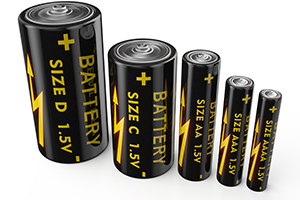Foam Batteries
 Several different researchers have been looking at making 3-dimensional batteries from porous materials to reduce weight and develop form factors that were previously impossible (See for example “Wooden Batteries” TTN June 2015). The porous nature of foam also has the potential to drastically increase power and energy density, since a very small fragment can contain a very large surface area, and the distance that ions have to travel is greatly reduced. However, past attempts at producing a reliable foam battery have been met with a number of challenges, including long recharge times and the inability to hold a charge.
Several different researchers have been looking at making 3-dimensional batteries from porous materials to reduce weight and develop form factors that were previously impossible (See for example “Wooden Batteries” TTN June 2015). The porous nature of foam also has the potential to drastically increase power and energy density, since a very small fragment can contain a very large surface area, and the distance that ions have to travel is greatly reduced. However, past attempts at producing a reliable foam battery have been met with a number of challenges, including long recharge times and the inability to hold a charge.
A new 3D solid state battery was recently unveiled that overcomes these challenges, while utilizing common materials and low-cost manufacturing processes. It starts with a substrate of copper foam onto which the anode (copper antimonide) is electroplated. A polymer electrolyte, which is permeable to ions but not electrons, is layered on top of the anode. The cathode is then applied as a dark, inky slurry and the battery is sealed in a plastic pouch.
In addition to storing up to twice the energy per unit volume as conventional batteries, the new battery does not overheat like lithium ion batteries are prone to do. Because they’re three-dimensional, foam batteries could be designed to fill in existing empty spaces within an electronic device, providing longer battery life without increasing the size of the product. And although initial applications are likely to be in the consumer electronics market, foam batteries may someday be used in electric vehicles and even grid-scale power storage.
For information: Amy Prieto, Prieto Battery Inc.; Web site: http://www.prietobattery.com/